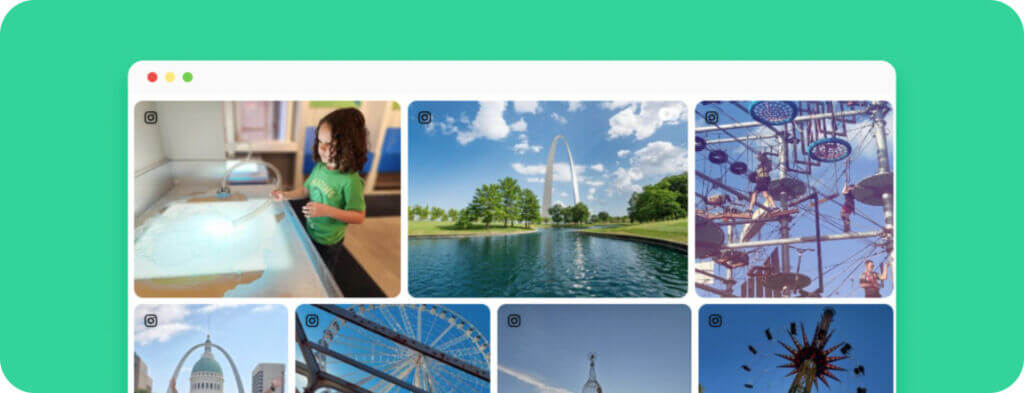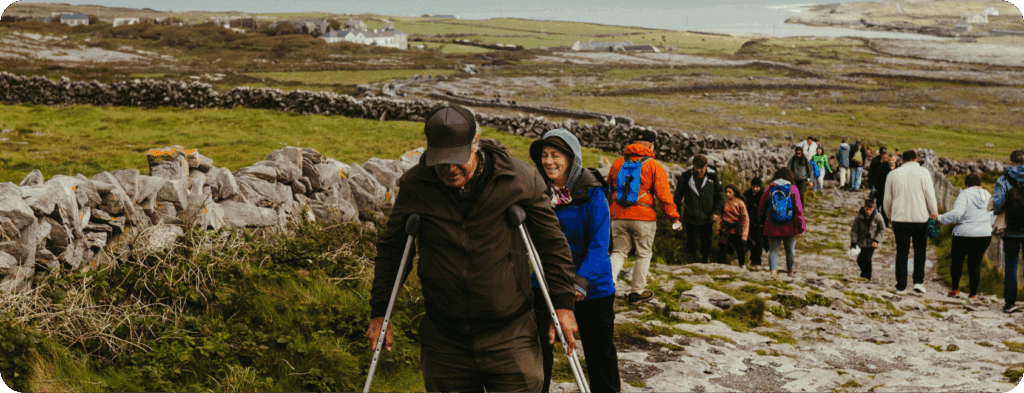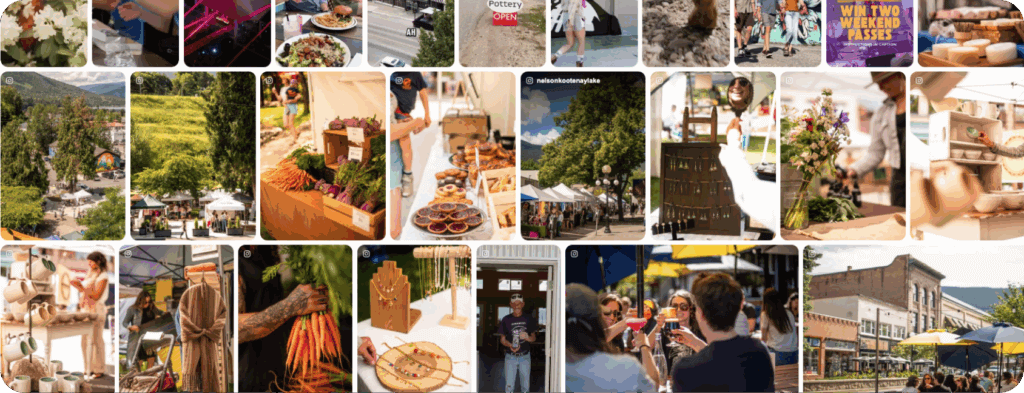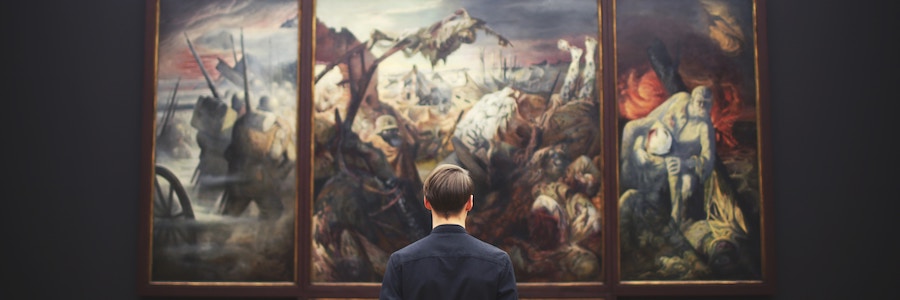
To keep museums refreshed and engaging, so much time, effort, and of course, money is poured into the creation of new exhibits, and the upkeep of existing ones.
You work hard to sell tickets to get people in the doors and enjoying these exhibits; phew! But looking at the bottom line, it doesn’t seem to make that much of an impact. For example, only 2% of the MET’s museum revenue is from ticket sales.
Attracting new visitors, and encouraging them to return on top of spending money on additional merchandise and programming is no small feat. So, what’s going to catch visitors’ attention, and make them want to visit your museum instead of the other various attractions in the city?
Using Visuals In Your Museum Marketing Strategy
Museums are visually inspiring places. Looking at artifacts, fossils, and art are what people come there to do. The people who visit museums are inspired to go there because of pictures they see online, and are drawn by their desire to experience an exhibit for themselves.
As many as 67% of consumers say that images are very important when making a purchasing decision; and that’s why a strong visual marketing strategy can help museums increase brand awareness and bring in more revenue.
The best kind of photos for this job are ones that past visitors have taken. That’s because they act as an authentic form of validation that the museum has some content on display that’s compelling enough to take photos of, and post on social media. In fact, featuring your happy customers in your marketing is proven to make your promotions 28% more effective.
By using this visual user-generated content (UGC) in your social media, website, and other marketing channels, you can help boost engagement, visits, and ultimately, revenue.
Let’s take a look at some revenue generating ideas for museums, using examples from cultural institutions like the SFMOMA, the MET, and Field Museum.
Want to learn more about how you can use UGC in your marketing? Read our latest eBook, The Complete Guide to UGC for Museums. It covers everything from the rights requesting process, to creative visual marketing strategies from 8 leading museums.
1| Promote External Event Bookings
People are always looking for beautiful, unique spaces to host their events; whether they are having an office holiday party, a wedding reception, or an awards ceremony, many are interested in aesthetic spaces in museums. Who doesn’t want their first dance to be under a giant T-rex skeleton?!
Promoting your unique space for these external events is really easy to do with user-generated content, especially because these types of events are heavily photographed and shared on social media. This is especially true for weddings, which are typically given a unique hashtag for guests to post their photos with. This makes it so easy for you to find this content afterwards as well!
Some museums advertise these opportunities in event-planning publications, or direct-market to clients with brochures. These are both perfect places to feature images from past clients, to inspire people, and paint a picture of what their event could look like. Your social channels and website are also great places to feature these images.
For example, when the New Museum first opened in New York, it was averaging 30 to 40 inquiries a day, and those events represented roughly 7 percent of revenue within the first three months, according to Lisa Phillips, the Museum’s Director at the time. That was almost 10 years ago—image the inquiries they get today!
2| Make Your Digital Channels More Visually Inspiring and Actionable
It’s important that the channels you use, like social media and your website, are converting visitors into paying customers.
Encouraging people to buy their tickets online is a good place to start. Aside from helping you increase ticket sales, it also improves the visitor experience. Especially for busy museums or during peak season, this can help when you know that box office lines can be long. (And you know that a happy customer goes a long way!)
Visuals from past visitors can help you encourage online ticket purchases, because they directly inspire people to want to visit the museum. If you place CTAs on images to directly link them to a page where they can buy tickets, then you can immediately act on the visitor’s interest in your exhibit or collection.
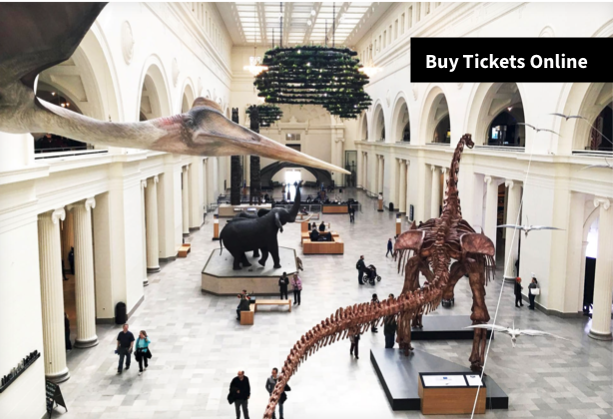
You can experiment with CTA copy, to tell visitors to “Book your tickets now” or “Get 10% off tickets when buying online”. By directly linking visuals to a booking page, you can measure exactly what type of images people are clicking on to purchase their tickets.
Determining what imagery people want to see can also help inform your overall visual marketing strategy, as you can know what to double down and where to refine.
The Field Museum in Chicago, has a gallery of UGC images on its homepage that links out to individual pages for specific exhibits. For example, if you click on the photo of their impressive Titanosaur, you’re brought to the exhibit’s landing page, where ticket information is right at the top of the page in the header.
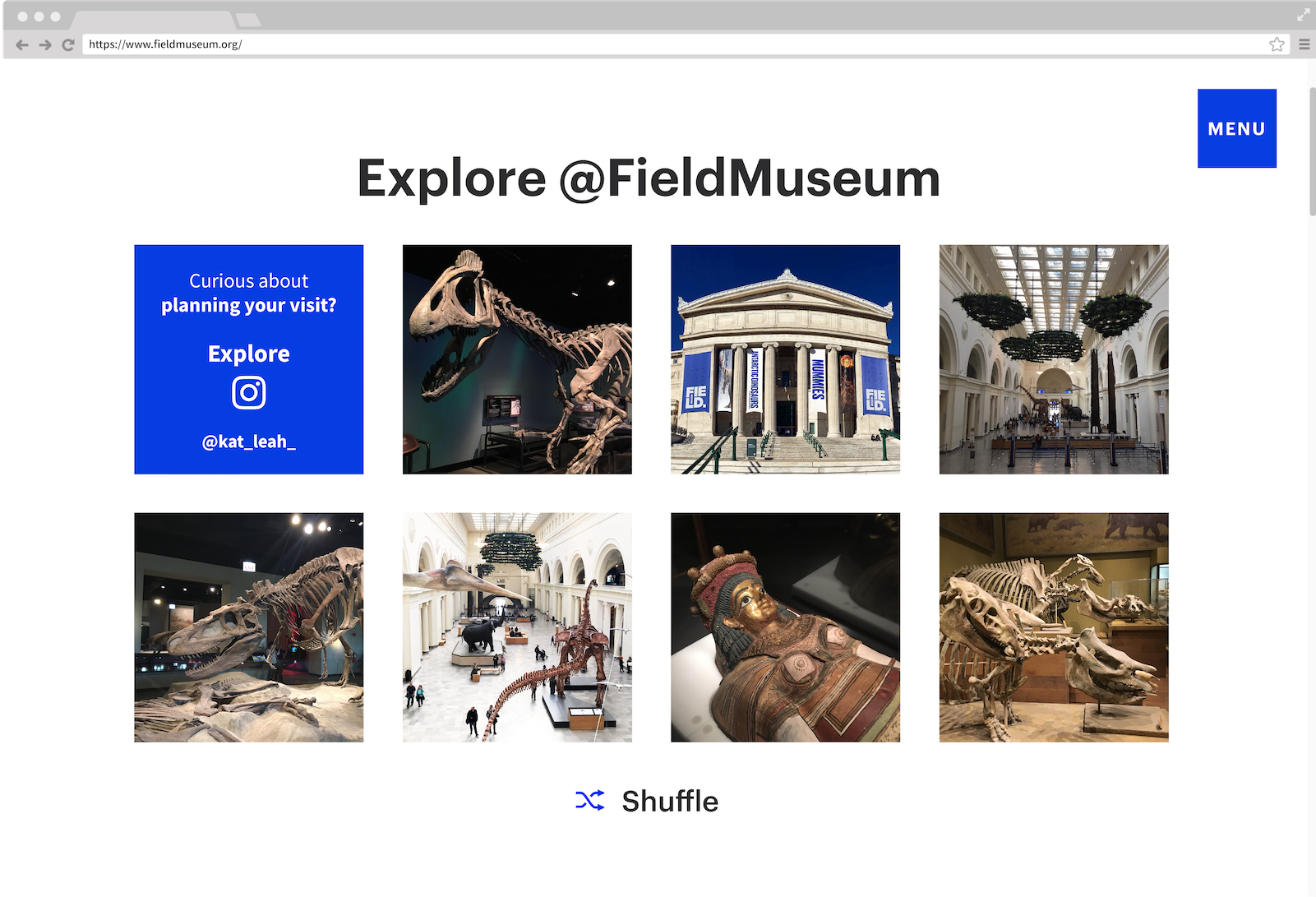 The Field Museum is no stranger to user-generated content; they recently won a Webby Award for their Instagram account where they prove that they are pros at visual marketing. They often repost visitor content, and strategically create engaging Instagram Stories that link right to website pages, or Facebook event pages for exhibits.
The Field Museum is no stranger to user-generated content; they recently won a Webby Award for their Instagram account where they prove that they are pros at visual marketing. They often repost visitor content, and strategically create engaging Instagram Stories that link right to website pages, or Facebook event pages for exhibits.
This is a good example of how to use your social media to sell tickets. Just make sure that your website or ticket portal’s experience is optimized for mobile, since most social media browsers do so from their cell phones.
3| Create Buzz for Additional Earned Income Opportunities
According to Sotheby’s Institute of Art, earned income typically accounts for 40% of a museums’ revenue stream. An upcoming and increasingly important revenue category, this can encompass everything from merchandise and licensing, to gift shops and educational programs.
Merchandising And Gift Shops
Merchandise inspired by collections is a great way to not only generate extra revenue, but create take-home items that will establish a connection between visitors and their experience at your museum.
“Museum shops are no longer just about selling things,” Diane Drubay, Chief Executive of museum marketing consultancy We Are Museums, told The New York Times. “They are about adding a new step to the museum experience.”
For example, the Metropolitan Museum of Art’s gift shop has items reflecting a variety of their collection items: scarves printed with patterns from their pottery collection; bracelets with patterns from ancient Roman and Greek artefacts; and clutch purses inspired by silk-and-wool tapestries.
During the museum’s Michelangelo exhibit, one of the shop’s top sellers was a $185 bangle bracelet imprinted with the artist’s sketch of the Libyan Sibyl, a female figure on the Sistine Chapel ceiling in Rome. According to Rich Perdott, the Met’s vice president of merchandising, about a third of the people who come to his museum say they plan to shop there.
To help extend the life of these items, turn to UGC from visitors who have purchased them after their time visiting your museum. Feature these on your social feeds, in your Instagram Stories, and on your website; especially if you sell merchandise online!
Some museums even create separate Instagram accounts for their stores. This makes it easy to link right to shopping pages from your profile and Instagram Stories.
It’s also important to capture interest inside the museum itself to make sure that no one skips the gift shop on the way out.
Outside your shop, you could put up a digital display of photos that customers who have purchased the merchandise posted. You could also put one of these displays outside the exhibit that you’ve created the merchandise for.
Educational Programs
Educational programs are good sources of earned income, if executed well. Many museums run summer camps and kids programs, in addition to school programs for field trips.
Marketing these experiences is best done using photos and videos to show exactly what the experience looks like. Bonus points if you can do so using pictures posted by parents and teachers (ie, the ones who are paying).
For educational programs, social proof for these programs are important for teachers to understand and believe the value that their students will get out of the trip. Visuals of activities coupled with testimonials from happy customers are a great way to do this in your program marketing.
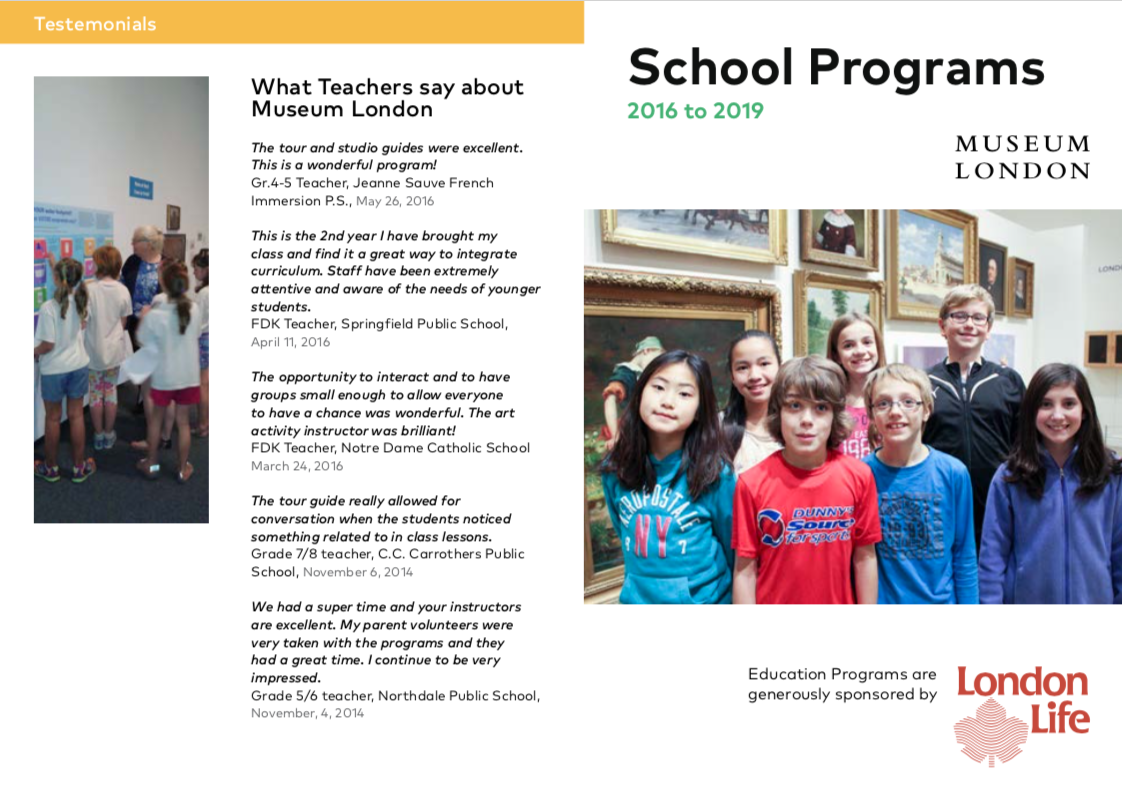
Video content is also an extremely effective marketing channel for promoting these programs. Footage of students participating, or interviews with teachers and students are great ways to generate interest.
This is great footage to host on your web pages, but also your social media feeds to generate awareness and interest for your programs. For example, SFMOMA had a chef from In Situ (the museum’s exhibition restaurant) teach a cooking class for kids. They have an entire Instagram Story highlight reel documenting the event.
Putting visuals at the center of your marketing is a step in the right direction to increase museum revenue. Both digital and physical channels are much more effective when they work to inspire potential visitors with what they can discover inside your museum. Whether they’re looking for unique merchandise, a beautiful event space, or an educational experience, help point them in the right direction with visual content from previous visitors.





